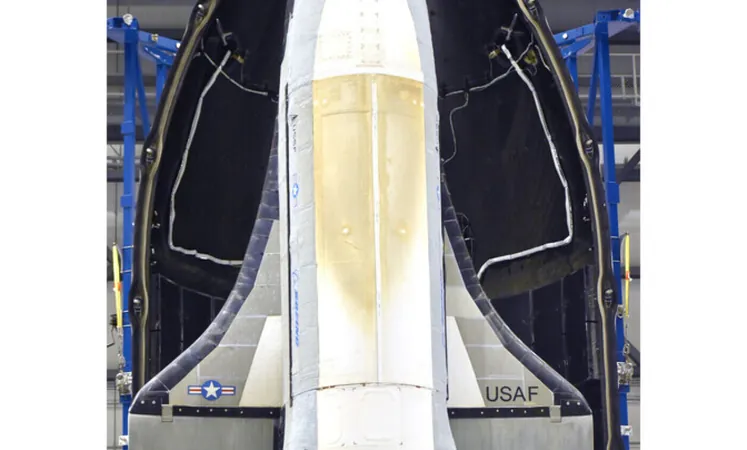
Revolution in Navigation: Quantum Sensor Set to Launch on Next X-37B Mission!
2025-08-15
Author: Ming
The Future of Navigation is Here!
Get ready, space enthusiasts! The U.S. Space Force is taking a giant leap in navigation technology with its upcoming eighth mission of the X-37B Orbital Test Vehicle, slated for launch on August 21 from Kennedy Space Center, Florida. This mission isn’t just your average spaceflight; it will feature a groundbreaking quantum inertial sensor that could redefine how we navigate beyond our planet.
Harnessing the Power of Quantum Science!
This innovative quantum sensor employs a fascinating technique known as atom interferometry. By cooling atoms to near absolute zero, they start to behave like waves. Using lasers, these atoms are forced into a "superposition state," allowing them to travel along dual paths simultaneously before recombining. The result? An intricate pattern that encodes vital information about the atoms' environment—essentially mapping the smallest shifts in motion, like rotations or accelerations.
A Game Changer for Space Exploration!
What sets this quantum sensor apart is its incredible accuracy and resilience. Unlike traditional mechanical and electronic navigation systems, quantum sensors are significantly less susceptible to drift or bias. This means they can deliver long-duration, precise navigation without relying on external signals, making them a game changer for both military and civilian space operations.
Pioneering Quantum Navigation in Space!
For the first time in history, a quantum inertial navigation system will be tested in space on this X-37B mission. Previous missions have laid the groundwork by testing atom interferometers, but none have focused on their potential for navigation—until now. According to Space Force officials, this test represents a pivotal step toward more resilient navigation methods, especially in scenarios where GPS signals could be compromised.
Unlocking New Frontiers in Space Travel!
The implications of successful quantum navigation technology are astronomical. As humanity sets its sights on deeper space exploration—think moon colonies, Mars missions, or beyond—a reliable autonomous navigation system is crucial. Should signals from Earth drop out, this quantum system might not just serve as a backup but evolve into the primary navigation method, transforming how we explore the cosmos.
Stay Tuned!
As the countdown to the X-37B launch begins, the excitement is palpable! Keep your eyes on the skies—this mission could herald a new era in how we navigate the mysteries of space!



 Brasil (PT)
Brasil (PT)
 Canada (EN)
Canada (EN)
 Chile (ES)
Chile (ES)
 Česko (CS)
Česko (CS)
 대한민국 (KO)
대한민국 (KO)
 España (ES)
España (ES)
 France (FR)
France (FR)
 Hong Kong (EN)
Hong Kong (EN)
 Italia (IT)
Italia (IT)
 日本 (JA)
日本 (JA)
 Magyarország (HU)
Magyarország (HU)
 Norge (NO)
Norge (NO)
 Polska (PL)
Polska (PL)
 Schweiz (DE)
Schweiz (DE)
 Singapore (EN)
Singapore (EN)
 Sverige (SV)
Sverige (SV)
 Suomi (FI)
Suomi (FI)
 Türkiye (TR)
Türkiye (TR)
 الإمارات العربية المتحدة (AR)
الإمارات العربية المتحدة (AR)